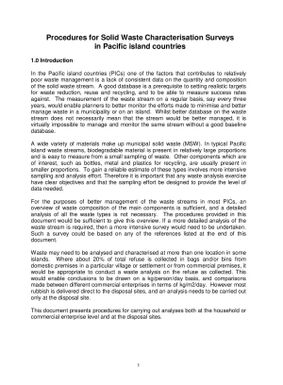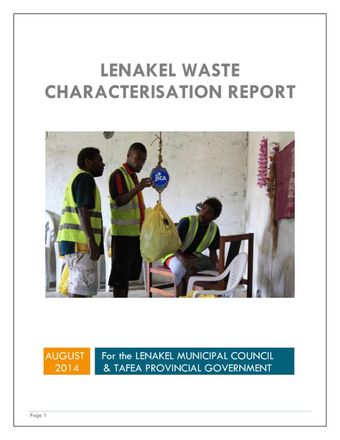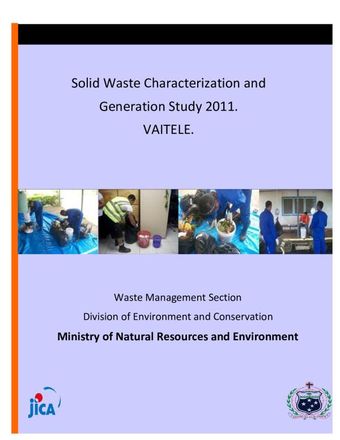Procedures for Solid Waste Characterisation Surveys in Pacific Island Countries
- Description:
- In the Pacific island countries (PICs) one of the factors that contributes to relatively poor waste management is a lack of consistent data on the quantity and composition of the solid waste stream. A good database is a prerequisite to setting realistic targets for waste reduction, reuse and recycling, and to be able to measure success rates against. The measurement of the waste stream on a regular basis, say every three years, would enable planners to better monitor the efforts made to minimise and better manage waste in a municipality or on an island. Whilst better database on the waste stream does not necessarily mean that the stream would be better managed, it is virtually impossible to manage and monitor the same stream without a good baseline database.
- Collections:
- Secretariat of the Pacific Regional Environment Programme (SPREP)
- Content partner:
- Secretariat of the Pacific Regional Environment Programme (SPREP)
- Availability:
- Not specified
-
Copyright status: All rights reservedFind out more about what you are able to do with this itemThis item is all rights reserved, with means you'll have to get permission from Secretariat of the Pacific Regional Environment Programme (SPREP) before using it. For more information, please see our use and reuse page.What can I do with this item?Non-infringing useNZ copyright law does not prevent every use of a copyright work, and this item may be hosted by an international institute or organisation. You should consider what you can and cannot do with a copyright work.No sharingYou may not copy and/or share this item with others without further permission. This includes posting it on your blog, using it in a presentation, or any other public use.No modifyingYou are not allowed to adapt or remix this item into any other works.No commercial useYou may not use this item commercially.
Related items
Welcome and warm Pasifik greetings
The information on this site has been gathered from our content partners.
The names, terms, and labels that we present on the site may contain images or voices of deceased persons and may also reflect the bias, norms, and perspective of the period of time in which they were created. We accept that these may not be appropriate today.
If you have any concerns or questions about an item, please contact us.



